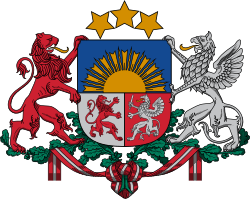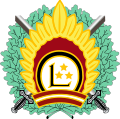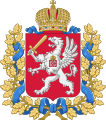
The history of Latvia began around 9000 BC with the end of the last glacial period in northern Europe. Ancient Baltic peoples arrived in the area during the second millennium BC, and four distinct tribal realms in Latvia's territory were identifiable towards the end of the first millennium AD. Latvia's principal river Daugava, was at the head of an important trade route from the Baltic region through Russia into southern Europe and the Middle East that was used by the Vikings and later Nordic and German traders.

"Dievs, svētī Latviju!" is the national anthem of Latvia. Created in 1873 as a patriotic song, it did not gain official status until 1920.

The national flag of Latvia was used by independent Latvia from 1918 until the country was occupied by the Soviet Union in 1940. Its use was suppressed during Soviet rule. On 27 February 1990, shortly before the country regained its independence, the Latvian government re-adopted the traditional red-white-red flag.

The Duchy of Courland and Semigallia was a duchy in the Baltic region, then known as Livonia, that existed from 1561 to 1569 as a nominally vassal state of the Grand Duchy of Lithuania and subsequently made part of the Crown of the Polish Kingdom from 1569 to 1726 and incorporated into the Polish–Lithuanian Commonwealth in 1726. On March 28, 1795, it was annexed by the Russian Empire in the Third Partition of Poland.

Historical Latvian Lands or formerly Cultural regions of Latvia are several areas within Latvia formally recognised as distinct from the rest of the country. These are: Kurzeme (Courland), Zemgale, Latgale, Vidzeme, and Sēlija (Selonia). While some of these regions are seen purely as culturally distinct, others have historically been parts of different countries and have been used to divide the country for administrative and other purposes.

Semigallia, also spelt Semigalia, is one of the Historical Latvian Lands located to the south of the Daugava river and to the north of the Saule region of Samogitia. The territory is split between Latvia and Lithuania, previously inhabited by the Semigallian Baltic tribe. They are noted for their long resistance (1219–1290) against the German crusaders and Teutonic Knights during the Northern Crusades. Semigallians had close linguistic and cultural ties with Samogitians.

Vidzeme is one of the Historical Latvian Lands. The capital of Latvia, Riga, is situated in the southwestern part of the region. Literally meaning "the Middle Land", it is situated in north-central Latvia north of the Daugava River. Sometimes in German, it was also known as Livland, the German form from Latin Livonia, though it comprises only a small part of Medieval Livonia and about half of Swedish Livonia. Most of the region's inhabitants are Latvians (85%), thus Vidzeme is the most ethnically Latvian region in the country.

Emblem of the Latvian SSR was adopted on August 25, 1940, by the government of the Latvian SSR. It was based on the emblem of the Soviet Union. It features symbols of agriculture (wheat) and Latvia's maritime culture. The red star as well as the hammer and sickle for the victory of communism and the "world-wide socialist community of states".

The Ministry of Defence of the Republic of Latvia is the Latvian government ministry in charge of the formation and implementation of national security and defence policy, and for the overall management and control of related subordinate agencies, such as the Latvian National Armed Forces. The ministry is headed by the politically appointed Minister of Defence.
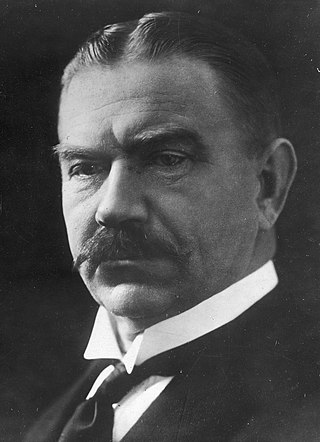
Arturs Alberings was the 6th Prime Minister of Latvia. He held office from 7 May 1926 to 18 December 1926.
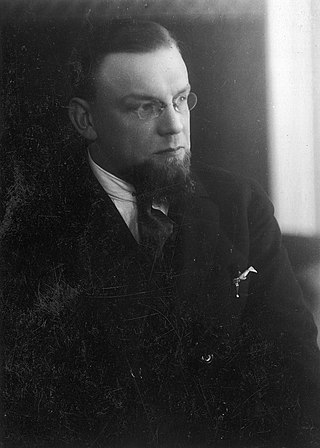
Marģers Skujenieks held the office of Prime Minister of Latvia twice from 19 December 1926 – 23 January 1928 and 6 December 1931 – 23 March 1933.

Postal history in the territory that now constitutes Latvia began during the 13th century, when the Archbishopric of Riga was included to the area of postal operations of the Monastic state of the Teutonic Knights and the Hanseatic League. In 1580 the Hanseatic League issued their first known regulations on courier work and payroll, regulations that also were active in the territory that now constitutes Latvia.
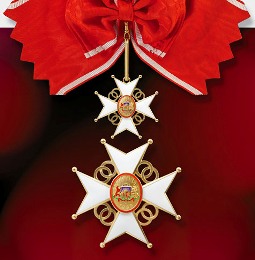
The Cross of Recognition is a state decoration of Latvia.

The State Emblem of the Soviet Union was adopted in 1923 and was used until the dissolution of the Soviet Union in 1991. Although it technically is an emblem rather than a coat of arms, since it does not follow traditional heraldic rules, in Russian it is called герб, the word used for a traditional coat of arms.
Symbols of Latvia are items or symbols that have symbolic meaning to, or represent, Latvia. These symbols are seen in official capacities, such as flags, coats of arms, postage stamps, and currency, and in URLs. They appear less formally as recurring themes in literature, art and folk art, heraldry, monuments, clothing, personal decoration, and as the names of parks, bridges, streets, and clubs. The less formal manifestations may be classified as national emblems.

The State Police of Latvia is the national police service and one of the national law enforcement agencies of the Republic of Latvia. It is subordinate to the Ministry of the Interior. The agency is divided into five Regional Administrations. Since the 13th of October 2020, the Chief of the State Police is Armands Ruks.
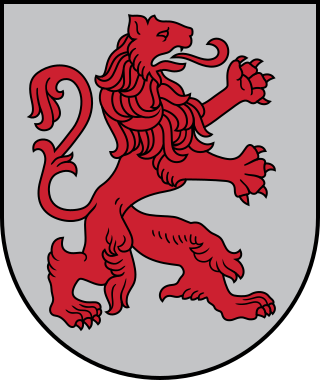
The coat of arms of Courland (Kurzeme), a historical region in western Latvia, has been known since the 16th century and depicts a lion gules on a silver background.

The Coat of arms of Vidzeme, a region in central Latvia, depicts a white griffin in a red field. It is a version of the earlier coat of arms of Livonia granted in the 16th century.
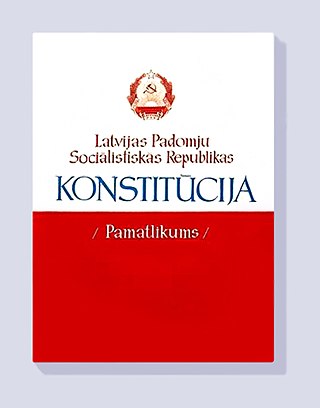
The 1978 Constitution of the Latvian SSR, officially the Constitution of the Latvian Soviet Socialist Republic was the constitution of the Latvian Soviet Socialist Republic adopted on April 18, 1978 at the eighth session of the 9th Convocation of the Supreme Soviet of the Latvian SSR.
This is a list of current coat of arms of Latvia, it's historical lands, state cities, and municipalities.
